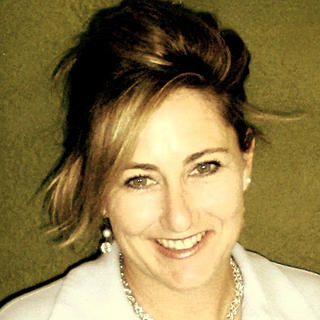The Fulbright Chronicles: Beginnings
- sherri harvey
- Sep 29
- 3 min read
Updated: Oct 4
It was a Tuesday morning, the kind where the inbox fills faster than the coffee brews. I clicked through subject lines half-distracted, until one stopped me cold: “Congratulations—you’ve been selected for a Fulbright Specialist Award.” My hands froze on the keyboard. Fulbright. Me.
In that moment, I realized something I’ve carried with me for years: what you think about, you bring about. I had thought about teaching abroad, about connecting classrooms across cultures, about sustainability and digital literacy as bridges to understanding. And now here I was, invited ti teach faculty members about digital literacy, sustainability, and AI in Kendari, Indonesia.
But before I go further, let’s answer the first big question:
1. How a Person Gets a Fulbright
The Fulbright Program is the United States government’s flagship international exchange initiative, created in 1946 by Senator J. William Fulbright and authorized by Congress. It’s run by the U.S. Department of State’s Bureau of Educational and Cultural Affairs, with support from over 160 partner countries around the globe.
Each year, about 8,000 awards go to students, scholars, teachers, and professionals—people committed to teaching, researching, and building cultural bridges. Since the program began, over 400,000 participants have carried the Fulbright name, bringing with them not just expertise, but curiosity and a willingness to learn.
How do you get one? It starts with vision. If you can picture yourself sharing your knowledge abroad—and learning in return—you’ve already taken the first step. Then comes persistence: writing and rewriting your proposal until it reflects both your strengths and your host institution’s needs. For me, that’s Halu Oleo University in Kendari. Finally, you wait. You hope. You keep thinking about the possibility, because what you think about, you bring about.
2. How I Felt When I Found Out
When the news arrived, I read it three times to believe it. Joy, disbelief, gratitude—it all rushed in at once. I sat in silence, realizing that what I had pictured for so long was no longer just a dream. The thought I carried had become reality. That’s the magic of Fulbright, but also the magic of intention: when you keep a vision close, it has a way of meeting you halfway.
3. Challenges as an Adjunct
Adjunct life is full of juggling: multiple campuses, stacked courses, no office, and no guarantees. It can feel like building a career on shifting sand. But even in those challenges, I kept holding onto the idea that meaningful opportunities were possible—that teaching with heart would matter somewhere, to someone. Fulbright feels like recognition of that persistence. It’s proof that when you keep thinking about your purpose, you can bring about change—even if the path is uncertain.
4. What You Think About, You Bring About
This phrase has carried me. I think a lot about global citizenship. About digital literacy as a bridge, about sustainability as a shared human challenge, about classrooms without borders. And now I’m headed Kendari, ready to teach, collaborate, and learn.
I want to encourage you, too: whatever vision you hold—whether it’s writing, traveling, teaching, or something entirely different—don’t dismiss it as too big or too far away. Keep it close. Nurture it. Because what you think about, you really can bring about.
5. Why this matters overall
The heart of this journey isn't about age, timing, or titles. It is about impact. People. Connection. My greatest hope is to inspire my students, my colleagues, my friends, and anyone who crosses my path to believe in their own possibilities.
Fulbright gives me a platform, but the real work happens in the connections: when a student in Kendari sees a new way of telling their story, when a friend back home feels encouraged to pursue their own dream, when someone reading these words thinks, Maybe I could do something like that, too. Every year prepared me for this one. Every challenge sharpened my persistence. Every classroom deepened my belief that it’s never too late to bring about something new. Fulbright isn’t a capstone—it’s a continuation.
This is the first entry in The Fulbright Chronicles. Five weeks in Kendari, at Halu Oleo University, lie ahead. I’ll share what I teach, what I learn, and how vision—held long enough—can become reality.
My hope is that you’ll think about your own possibilities, and in doing so, bring them about.
P.S. The views expressed in this blog are my own and do not represent those of the Fulbright Program, the U.S. Department of State, or any affiliated organizations.






I like what you say about digital literacy being a bridge.